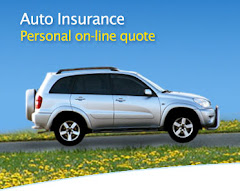Why You Need Uninsured/Underinsured Motorist Coverage
Hope you`re covered if you get into a fender-bender and discover that the at-fault driver is uninsured. In that unpleasant situation, your auto insurance will kick into gear if you have uninsured/underinsured motorist protection, and among those who would steer you in the direction of those sentiments are auto insurance industry representatives such as Nicole Mahrt, Dave Snyder, Dan Kummer and Sharon Cooper.Think of uninsured/underinsured motorist coverage as an important self-help tool that generally is pretty affordable. It`s important for people to protect themselves in case they get into an accident with someone who either has no auto insurance or doesn`t have enough coverage, says Mahrt, western regional public affairs director for the American Insurance Association. "You probably can`t afford to drive without it."
"Everyone does need it if you live in a state that mandates that coverage, and about a dozen states do," says Mahrt`s colleague, Dave Snyder, vice president and assistant general counsel for the American Insurance Association in Washington, D.C. "Your auto insurance provider should be able to tell you whether that coverage is mandated or is optional. Beyond that, if you buy it, you need to determine how much coverage you need. How much you need depends on whether you have health insurance and whether you want to be compensated for ‘pain and suffering,` which you get with UM/UIM."
"You can protect yourself from being hurt financially by buying uninsured/underinsured motorist protection," points out Kummer, director of auto insurance for the Property Casualty Insurers Association of America in Des Plaines, Ill. "Without uninsured/underinsured motorist coverage, you have little likelihood of gaining payment for damages you or your vehicle sustain if you`re involved in an accident with a driver who is either underinsured or driving without any coverage," says Kummer.
Selective Insurance Senior Vice President Sharon Cooper characterizes uninsured/underinsured motorist protection as "an important coverage for consumers because it protects them in situations they can`t plan for. Without the coverage, their only recourse may be to sue an individual to cover their losses if (that other driver) doesn`t have insurance or enough insurance."
Uninsured coverage also covers you if a hit-and-run motorist hits your vehicle. "With this coverage," Kummer continues, "you and your passengers receive compensation for medical expenses, lost wages and other injury-related losses. You can sue that person, but if that driver has nothing, you`ll get nothing even with a favorable judgment."
Underinsured motorist protection pays you for damages that surpass the amount of coverage carried by a driver who is underinsured. "That's valuable, because many drivers carry minimum limits, and that may be insufficient to cover your injuries and lost wages," notes Kummer.
The Insurance Information Institute's Carolyn Gorman extolled the virtues of such catastrophic coverage. "You absolutely need this coverage, because, if you get into an accident with someone who is driving without insurance or doesn`t have enough of it, you want to be made financially whole again. You have to protect yourself fiscally and physically, and uninsured/underinsured motorist protection can help you in that regard."
Uninsured motorist protection can help you in another way. "Let`s say you`re a pedestrian. If you carry this coverage and you get hit by a car while you`re trying to cross the street, the coverage could pay your medical expenses and lost wages," says Gorman, vice president for III, based in New York.





